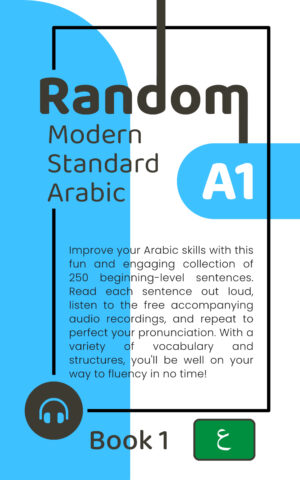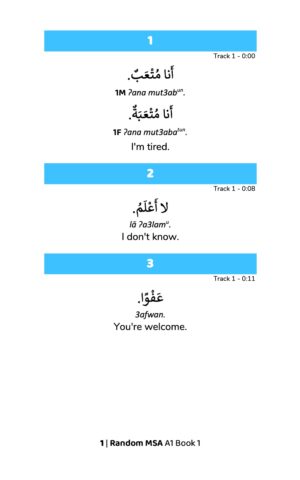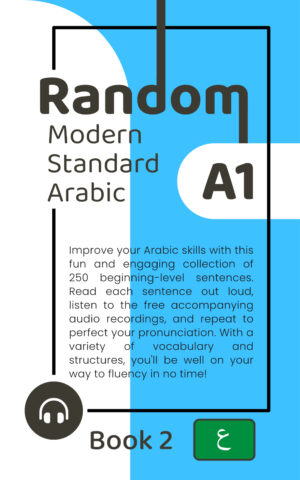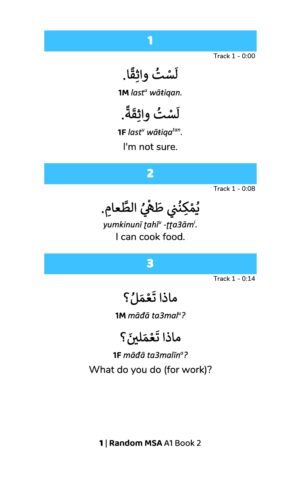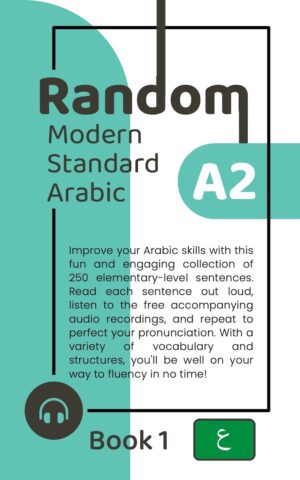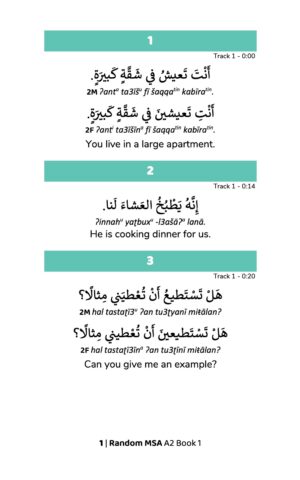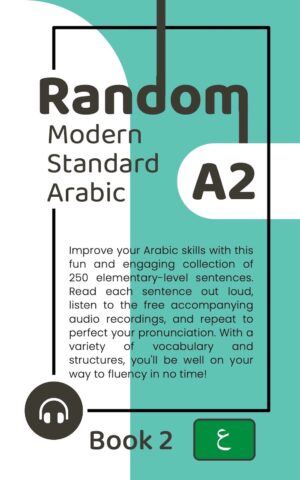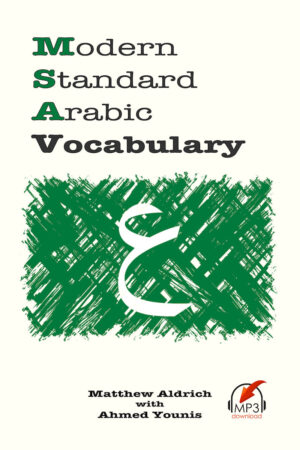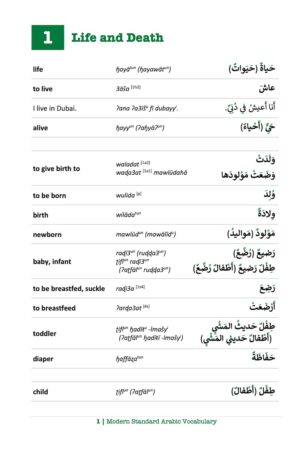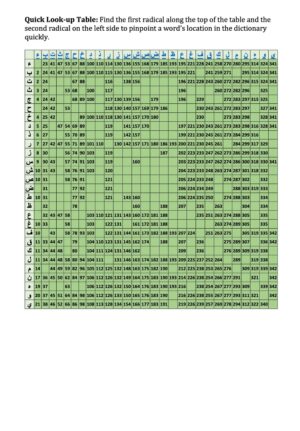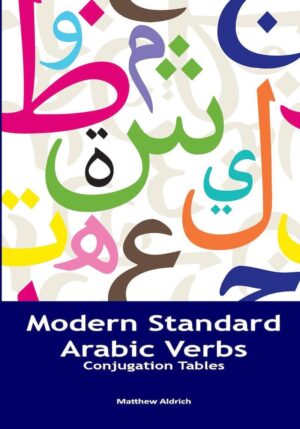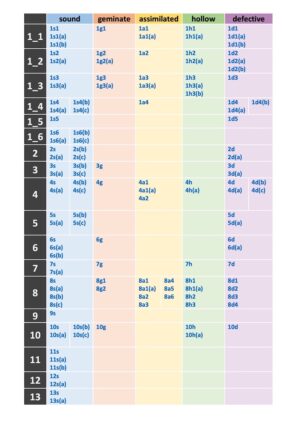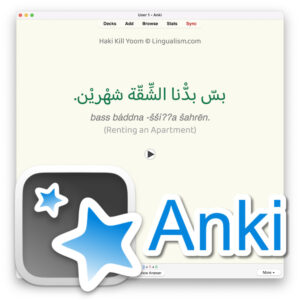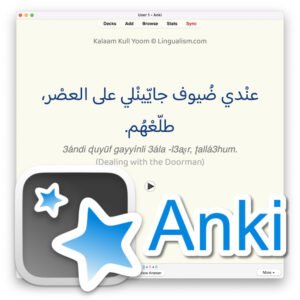Learning a new language can be a challenging task, especially when it comes to reading in a script that is unfamiliar to you. That’s why we have incorporated phonemic transcription (PT) into some of our resources, along with the traditional Arabic script. If you are already confident in reading Arabic, feel free to ignore the PT. However, if you find it helpful, use it as a tool to assist you in understanding the material without feeling overwhelmed. Use the PT as a stepping stone, not a crutch, and refer back to it as needed to verify your accuracy in reading and pronunciation as you work towards reading the Arabic script with confidence.
In this guide, you will find a table that explains the phonemic transcription symbols and their corresponding Arabic letters. The table also provides a basic description of the sound that each symbol/letter represents.
Consonants
| ʔ | ء | is a glottal stop, similar to the sound between the vowels in "uh-oh". (The letter ء ("hamza") can be 'seated' on letters depending on the rules of Arabic orthography: أ إ ؤ ئ. |
| b | ب | sounds like the "b" in "boy". |
| t | ت | sounds like the "t" in "top". |
| ŧ | ث | sounds like the "th" in "think". |
| j | ج | sounds like the "j" in "jam". |
| ɧ | ح | is an emphasized, "breathy" /h/, similar to the sound of breathing on glass to fog it up. |
| x | خ | is similar to the "ch" in the Scottish word "loch" or the German "doch". It is a guttural sound made at the back of the throat, similar to the sound of clearing one's throat. |
| d | د | sounds like the "d" in "dog". |
| đ | ذ | sounds like the "dh" in "the". |
| r | ر | sounds like the "r" in "run". |
| z | ز | sounds like the "z" in "zoo". |
| s | س | sounds like the "s" in "sun". |
| š | ش | sounds like the "sh" in "she". |
| ȿ | ص | is an emphatic "s". |
| ɖ | ض | is an emphatic "d". |
| ʈ | ط | is an emphatic "t". |
| ʐ | ظ | is an emphatic "đ" or "z", depending on a speaker's preference. |
| 3 | ع | is a voiced /ɧ/ ح, a sound that is difficult to describe as it does not exist in English or other European languages. It is a glottal sound that is produced by constricting the air flow in the pharynx, located at the back of the throat. |
| ɣ | غ | is the voiced equivalent of /x/ خ, similar to the guttural French "r" as in Paris |
| f | ف | sounds like the "f" in "fun". |
| q | ق | is a guttural /k/ sound made further back in the throat than the regular "k" sound in English |
| k | ك | sounds like the "k" in "kind". |
| l | ل | sounds like the "l" in "love". |
| m | م | sounds like the "m" in "mom". |
| n | ن | sounds like the "n" in "no". |
| h | ه | is pronounced like the "h" in "hello". |
| w | و | sounds like the "w" in "wow". |
| y | ي | sounds like the "y" in "yes". |
Vowels
| ā | ا | is a long vowel sound like the "a" in "can" but a bit longer, and in some words, like the "a" in "father". |
| ū | و | is a long vowel sound like the "u" in "tune". |
| ī | ي | is a long vowel sound like the "i" in "king". |
| a | ـَ | is a short vowel sound like the "a" in "cat", and in some words, like the "a" in "father" but shorter. |
| i | ـِ | is a short vowel sound like the "i" in "bin". |
| u | ـُ | is a short vowel sound like the "u" in "put". |
Case Endings
Modern Standard Arabic has case endings (called “i3raab” in Arabic) and other word-final short vowels (in verb conjugations, etc.).
Like other short vowels, these are written as diacritics above and below consonants in Arabic script. To mimic this, we write case endings in small superscript in the phonemic transcription. This is done to remind you that these letters are not an intrinsic part of the word but are used to show a word’s grammatical role–nominative (subject), accusative (object), or genitive (possessive)–in a sentence.
It is important to note that i3raab and (other final short vowels) are not pronounced pre-pausal (at the end of a clause or sentence, basically before a period or comma). However, in vocalized Arabic script (with diacritics (a.k.a. tashkeel)), these endings are normally written even though they are not pronounced. We also show these endings in the phonemic transcription to maintain the grammatical information provided in the Arabic script. Listen to the accompanying audio tracks, and you will notice how these endings are not pronounced pre-pausal.
The following are materials from Lingualism for Modern Standard Arabic that include phonemic transcription.


